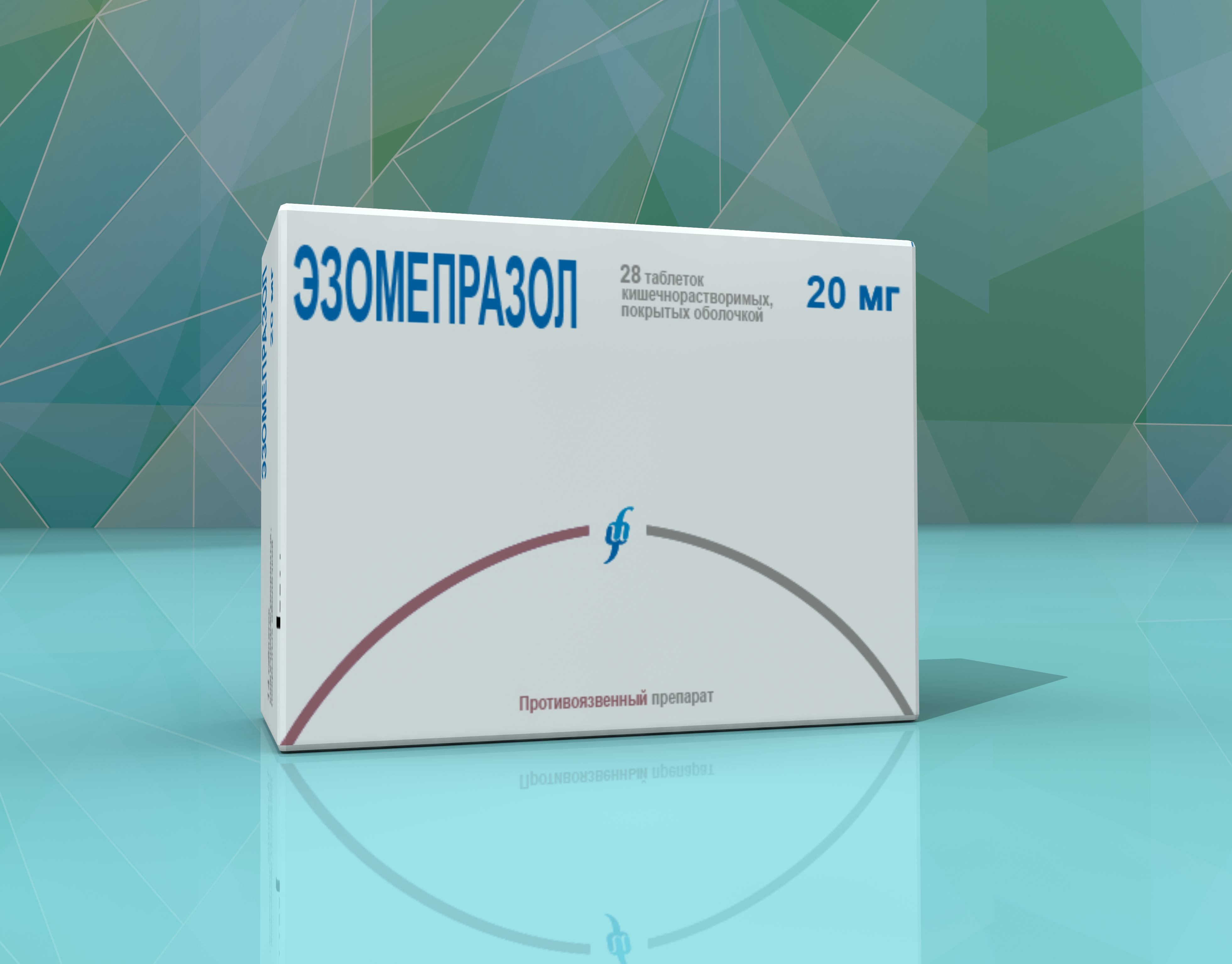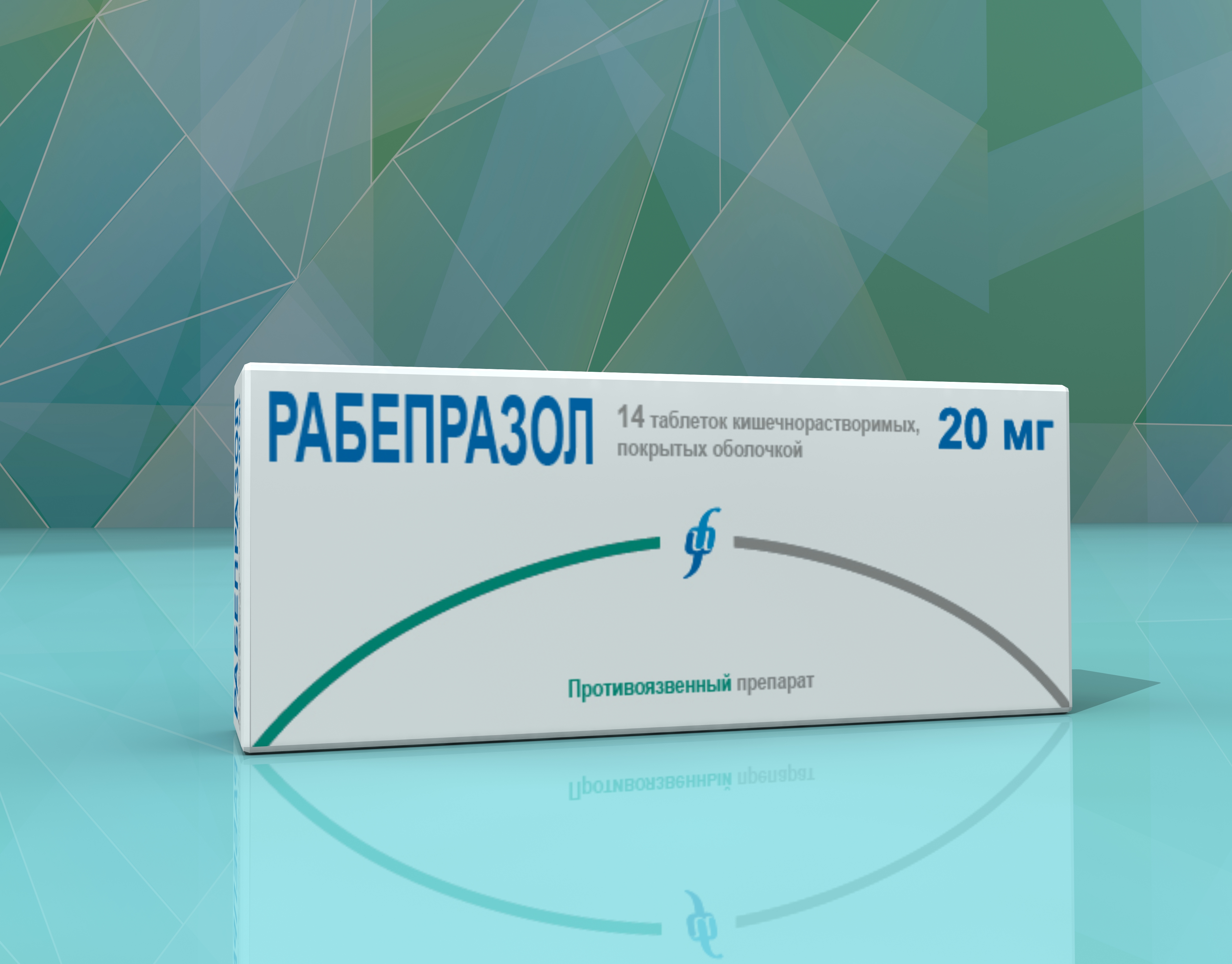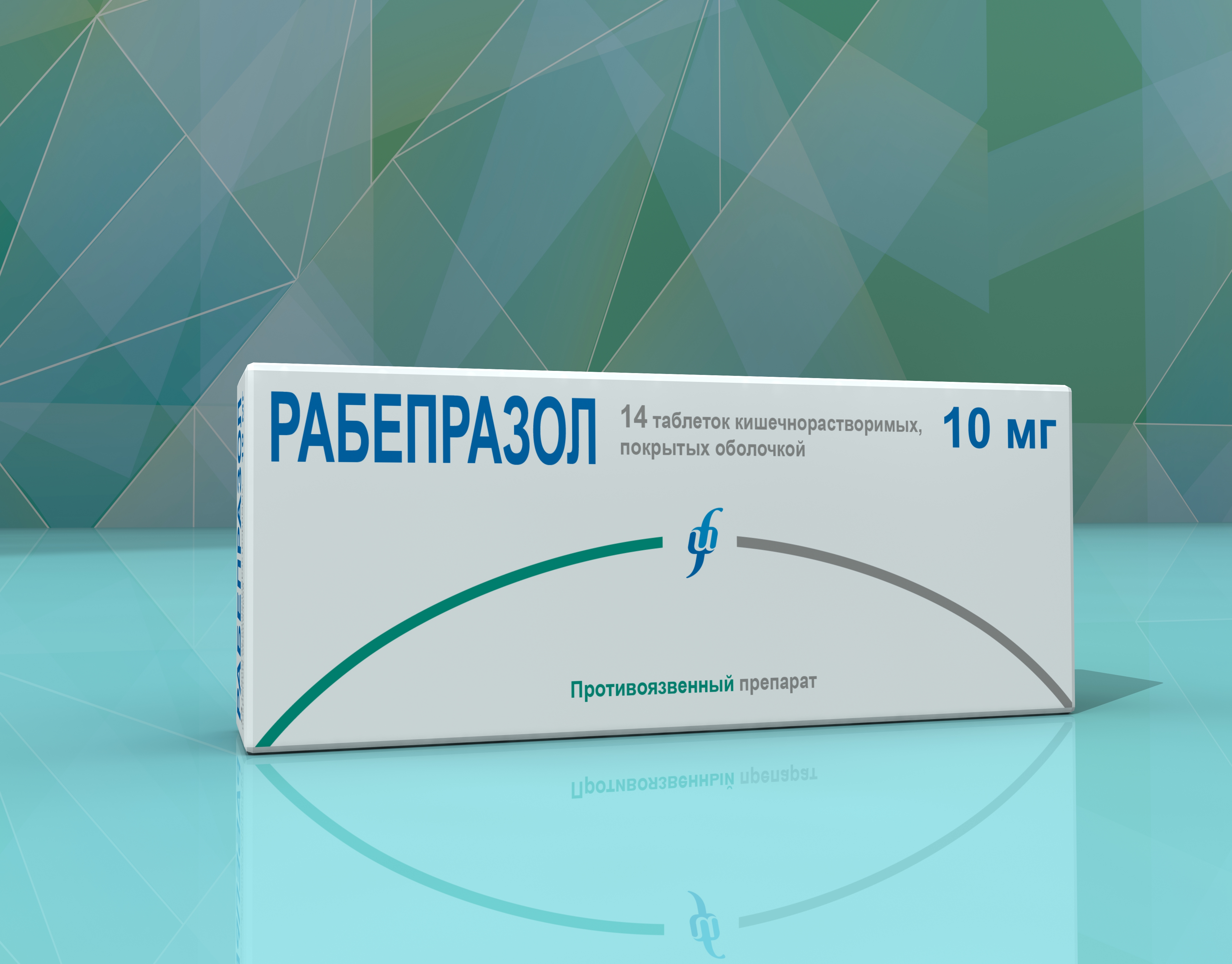Gastrointestinal tract
Izvarino Pharma manufactures products used for the treatment of the gastrointestinal tract: antiulcer drugs, conditions associated with acidity disorders, functional disorders
Izvarino Pharma manufactures products used for the treatment of the gastrointestinal tract: antiulcer drugs, conditions associated with acidity disorders, functional disorders

1 film-coated tablet 20 mg contains:
esomeprazole magnesium dihydrate - 21.7 mg (equivalent to esomeprazole - 20 mg).
1 film-coated tablet 40 mg contains:
esomeprazole magnesium dihydrate - 43.4 mg (equivalent to esomeprazole - 40.0 mg).
Gastro-resistant coated tablets, 20 mg, 40 mg.
10 or 14 tablets in a blister of PVC/PVDC film and aluminum foil or 30 or 80 tablets in a bottle of high density polyethylene sealed with a cap of high density polyethylene with a tamper-evident closure (polymer and cardboard based liner) or without it. A self-adhesive label is glued onto the bottle.
1 bottle or 1, 2, 3 or 4 blisters with patient leaflets are placed in a carton pack.
Gastroesophageal Reflux Disease:
• treatment of erosive reflux esophagitis;
• long-term supportive management of patients with healed erosive reflux esophagitis to prevent relapse;
• symptomatic treatment of gastroesophageal reflux disease.
Peptic Ulcer
Combination therapy:
• duodenal ulcer associated with Helicobacter pylori;
• prevention of relapse of peptic ulcers associated with Helicobacter pylori.
Prolonged acidity suppressive treatment in patients after bleeding of peptic ulcer (after intravenous treatment to suppress gastric secretion to prevent relapse).
Patients receiving continued NSAID therapy:
• Healing of gastric ulcers associated with NSAID therapy;
• Prevention of gastric and duodenal ulcers associated with NSAID therapy, in patients at risk.
Treatment of Zollinger Ellison Syndrome or other conditions characterized by pathological gastric hypersecretion including idiopathic hypersecretion.
Oral. The tablet should be swallowed whole with water. The tablets must not be chewed or crushed.
Adults and children over 12 years old
Gastroesophageal Reflux Disease
Treatment of erosive reflux esophagitis: 40 mg once daily for 4 weeks.
An additional 4 weeks treatment is recommended for patients in whom esophagitis has not healed or who have persistent symptoms after the first course.
Long-term supportive management of patients with healed erosive reflux esophagitis to prevent relapse: 20 mg once daily.
Symptomatic treatment of gastroesophageal reflux disease: 20 mg once daily for patients without esophagitis. If symptom control has not been achieved after 4 weeks, the patient should be further investigated. Once symptoms have resolved, subsequent symptom control can be achieved using esomeprazole ‘when needed’ i.e. 20 mg once daily when a symptom appears. In NSAID treated patients at risk of developing gastric and duodenal ulcers, treatment using an on demand regimen is not recommended.
Adults
Peptic Ulcer
Combination therapy for the eradication of Helicobacter pylori:
• Treatment of duodenal ulcer associated with Helicobacter pylori: esomeprazole 20 mg, amoxicillin 1 g and clarithromycin 500 mg. All should be taken twice daily for 1 week;
• Prevention of relapse of peptic ulcers associated with Helicobacter pylori: esomeprazole 20 mg, amoxicillin 1 g and clarithromycin 500 mg. All should be taken twice daily for 1 week.
Prolonged acidity suppressive treatment in patients after bleeding of peptic ulcer (after intravenous treatment to suppress gastric secretion to prevent relapse)
Esomeprazole 40 mg once daily for 4 weeks after intravenous therapy reducing gastric secretion.
Patients receiving continued NSAID therapy:
• Healing of gastric ulcers associated with NSAID therapy: esomeprazole 20 mg or
40 mg once daily: duration of treatment is 4-8 weeks;
• Prevention of gastric and duodenal ulcers associated with NSAID therapy: esomeprazole 20 mg or 40 mg once daily.
Conditions associated with pathological gastric hypersecretion including Zollinger Ellison Syndrome and idiopathic hypersecretion.
The recommended initial dose of esomeprazole 40 mg twice daily. The dosage should then be individually adjusted and treatment continued as long as clinically indicated. Based on clinical data, the product can be administered in doses up to 120 mg twice daily.
Renal Impairment: Dose adjustment is not required. However, the experience of esomeprazole usage in patients with severe renal insufficiency is limited; therefore, such patients should be treated with caution ( see section ‘Pharmacokinetics’).
Hepatic Impairment: dose adjustment is not required in patients with mild to moderate liver impairment. For patients with severe liver impairment, a maximum daily dose of 20 mg should not be exceeded.
Elderly Patients: dose adjustment is not required.

1 gastro-resistant coated tablet, 20 mg contains:
rabeprazole sodium - 20.0 mg equivalent to rabeprazole - 18.85 mg.
Gastro-resistant coated tablets, 20 mg.
7, 10 or 14 tablets in a blister of PVC film and aluminum foil or 14, 28, 30 or 60 tablets in a bottle of high density polyethylene sealed with a cap of high density polyethylene with a tamper-evident closure (polymer and cardboard based liner) or without it.
1, 2, 4 or 8 blisters of 7 tablets each or 1,2 or
4 blisters of 14 tablets each, or 1, 2, 3, 5, 6, 9 or 10 blisters of 10 tablets each or 1 bottle together with patient leaflets, are placed in a carton pack.
• Active gastric ulcer and anastomotic ulcer;
• Active duodenal ulcer;
• erosive or ulcerative gastroesophageal reflux disease or reflux esophagitis;
• Maintenance treatment of gastroesophageal reflux disease;
• Non-erosive gastroesophageal reflux disease;
• Zollinger-Ellison syndrome and other pathological hypersecretory conditions;
• In combination with appropriate antibacterial therapy for the eradication of Helicobacter pylori in patients with gastric ulcer.
Rabeprazole tablets should not be chewed or crushed. The tablets should be swallowed whole. It has been established that neither time of the day, nor meals affect the activity of rabeprazole sodium.
In active gastric ulcer and anastomotic ulcer the recommended oral dose is 20 mg once daily. Generally, healing occurs in 6 weeks but in some cases the treatment may be prolonged for up to another 6 weeks.
In active duodenal ulcer the recommended oral dose is 20 mg once daily. The duration of treatment is from 2 to
4 weeks. Where necessary the treatment may be prolonged for up to another 4 weeks.
For the treatment of erosive gastroesophageal reflux disease or reflux esophagitis the recommended oral dose is 20 mg once daily. The duration of treatment is from 4 to 8 weeks. Where necessary the treatment may be prolonged for up to another 8 weeks.
For the maintenance treatment of gastroesophageal reflux disease the recommended oral dose is 20 mg once daily. The duration of treatment depends on the patient condition.
For the treatment of non-erosive gastroesophageal reflux disease without esophagitis the recommended oral dose is 20 mg once daily. If symptom control has not been achieved after four weeks, the patient should be further investigated. When symptom relief is achieved for further control can the product can be taken orally once daily on demand.
For the treatment of Zollinger-Ellison syndrome and other pathological hypersecretory conditions the dose is adjusted individually. The starting dose is 60 mg daily, then the dose is increased and the product is administered as a single dose of 100 mg daily or 60 mg taken twice daily. For some patients the divided dosage is preferable. The treatment should continue for as long as clinically indicated. Some patients with Zollinger-Ellison syndrome have been treated continuously with rabeprazole for up to one year.
For the eradication of Helicobacter pylori the recommended oral dose is 20 mg twice daily under a certain regimen with appropriate combination of antibiotics. The duration of treatment is 7 days.
Patients with renal and hepatic impairment
No dosage adjustment is necessary in patients with renal insufficiency.
In patient with light and moderate hepatic insufficiency blood concentrations of rabeprazole were generally higher than in healthy patients.
For patients with severe liver disease, rabeprazole should be prescribed with caution.
Geriatric patients
No dosage adjustment is necessary.
Pediatric patients
The safety and efficacy of rabeprazole sodium 20 mg short-term (up to 8 weeks) treatment of gastroesophageal reflux disease in children aged 12 and more have been established by extrapolating the results of adequate and well-controlled efficiency studies of rabeprazole sodium for adults and by safety and pharmacokinetics studies for pediatric patients. The recommended dose for children aged 12 and more is 20 mg once daily for 8 weeks.
The safety and efficacy of rabeprazole sodium for the treatment of gastroesophageal reflux disease have not been established in children under the age of 12 years. The safety and efficacy of rabeprazole sodium for other indications have not been established in pediatric patients.

1 gastro-resistant coated tablet, 10 mg contains:
rabeprazole sodium - 10.0 mg equivalent to rabeprazole - 9.24 mg.
Gastro-resistant coated tablets, 10 mg.
7, 10 or 14 tablets in a blister of PVC film and aluminum foil or 14, 28, 30 or 60 tablets in a bottle of high density polyethylene sealed with a cap of high density polyethylene with a tamper-evident closure (polymer and cardboard based liner) or without it.
1, 2, 4 or 8 blisters of 7 tablets each or 1,2 or
4 blisters of 14 tablets each, or 1, 2, 3, 5, 6, 9 or 10 blisters of 10 tablets each or 1 bottle together with patient leaflets, are placed in a carton pack.
Dyspepsia symptoms associated with increased gastric acidity including symptoms of gastroesophageal reflux disease (heartburn, acid regurgitation).
Oral, single dose of 10 mg daily.
Rabeprazole tablets should not be chewed or crushed. The tablets should be swallowed whole. The product should be taken in the morning before meal. It has been established that neither time of the day, nor meals affect the activity of rabeprazole sodium but the recommended time for product administration contributes to better patient compliance.
If no effect is achieved after the first three weeks, further investigation is recommended. The maximum course of treatment without consulting a physician is 14 days.